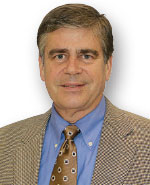Sorry, Doc, golf isn’t dead, it’s changing
 In the last 10 years or so we have seen assistant superintendents leaving the profession to the point where there is a lack of new college graduates to fill assistant superintendent positions around the country. The loss and lack of assistant superintendents does not bode well for the future of the profession.
In the last 10 years or so we have seen assistant superintendents leaving the profession to the point where there is a lack of new college graduates to fill assistant superintendent positions around the country. The loss and lack of assistant superintendents does not bode well for the future of the profession.
Before we look forward, let’s look back. The impact on golf of the Great Recession (late-2000s) both in measurable terms and in the psyche of the public, cannot be overstated, and continues today. My doctor retired a year ago. At my first checkup with the new doctor, she asked me what I did for a living. After I told her, she responded, “I thought golf was dead.” Since then, I’ve been aware of how many people share my doctor’s view. That attitude doesn’t encourage young people to get into the profession.
Since the Great Recession, superintendents have seen course closures, budget cuts, longer work hours and a notable drop in personal wealth associated with retirement accounts, which contributes to a sense of loss in personal security.
Suddenly, superintendents who might have thought about early retirement or changing jobs prior to the recession were lucky to have a job, and retirement funds tanked, delaying retirement. Assistant superintendents became stuck, with the ability to move up to a new superintendent opening coming to a halt. The days of an assistant working hard and moving on to a superintendent position after just a few years became 10 years or longer. Faced with this prospect, assistants began looking for employment outside the profession.
This has trickled down to students working on golf courses. Traditionally, the lifeblood of turf programs at universities are high school or college students hired as summer employees. If you think of how you got into golf course maintenance, you probably trace it to a superintendent mentoring and encouraging you into the profession. I’ve not seen much of that in the last several years. Many students working on golf courses have been discouraged because of a rather negative (and probably realistic view) of the profession.
A common explanation for the low number of college turfgrass students — and thus potential future assistant superintendents — is cost. Based on 2015 data, 68 percent of public university graduates have incurred college loans averaging $30,000. However, if cost were the single most important factor, 1- and 2-year technical schools would have reported an increase in the number of turfgrass students, which is not the case. The technical schools don’t have the turfgrass students, either.
Salaries for assistant superintendents have been stagnant and relatively low. However, this is changing to a large degree because of the current lack of good students to fill openings. I continue to tell students that if they are willing to go anywhere, they have an opportunity to get the job they want at the pay they desire.
The issue with moving anywhere is that assistants entering the job market now face personal issues that were not as prevalent 30 or 40 years ago. In a world where both partners in a relationship work and pursue their own careers, compromise is a part of life. Assistants are often restricted to a locale because of a spouse’s employment requirements. And given shared responsibilities in raising a family, working 70 hours a week is not feasible.
Some think Millennials don’t have the same passion or won’t work as hard as previous generations. I have found through my interaction with turf students that their attitudes, love and passion for golf course management hasn’t changed. The environment in which we work and live has.
Given the issues the golf course management industry faces, we often forget what a great profession it is. Do you remember why you got into the profession? The next time an employee is inquiring about being a superintendent, tell him or her why you did.








